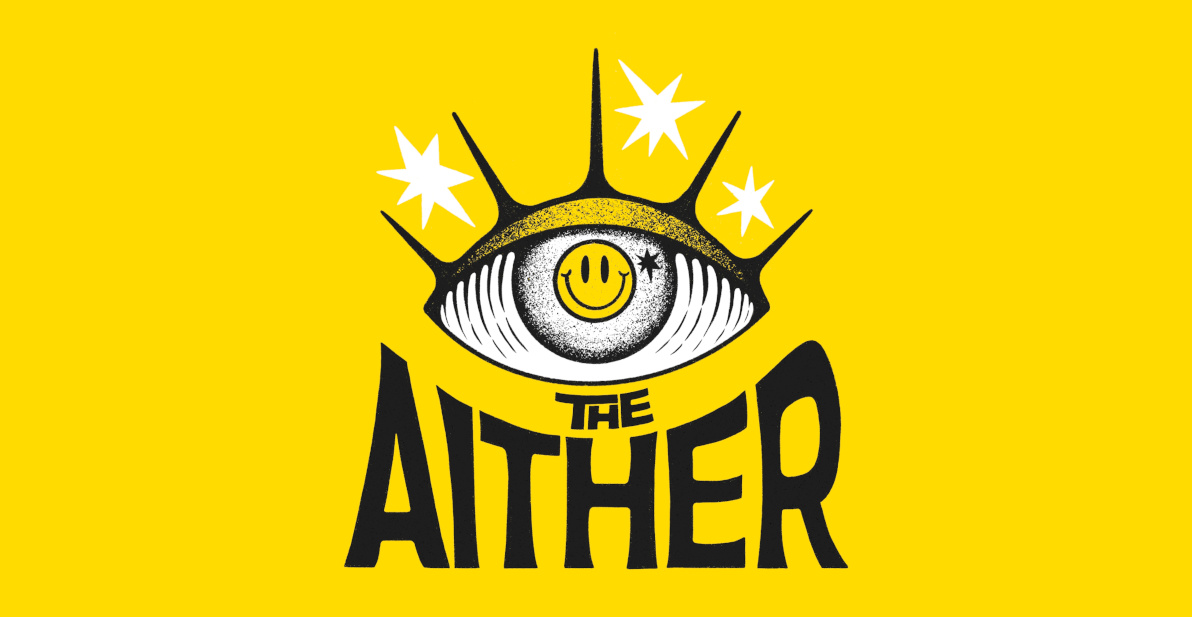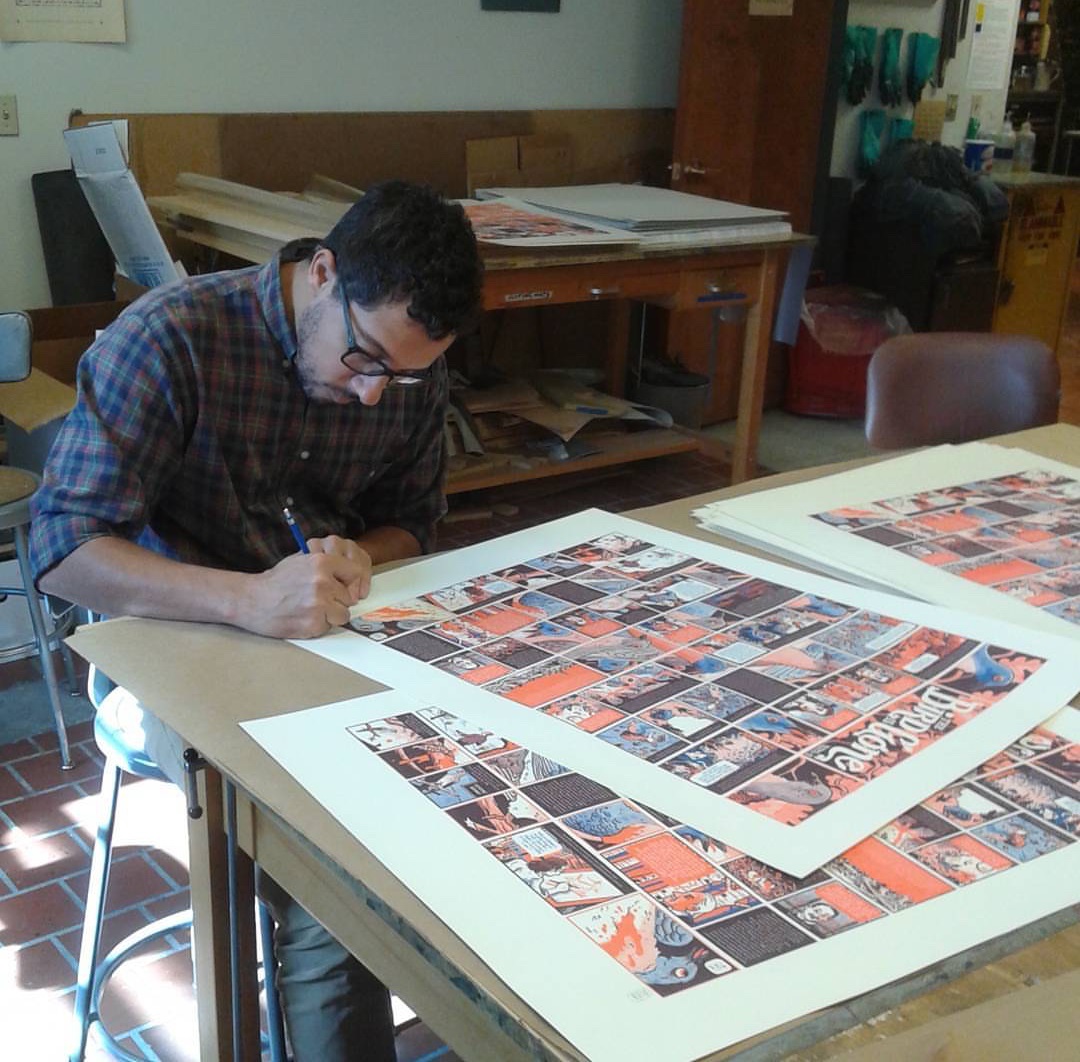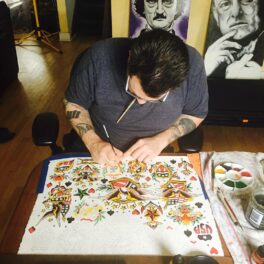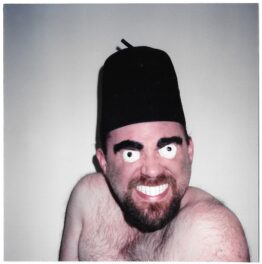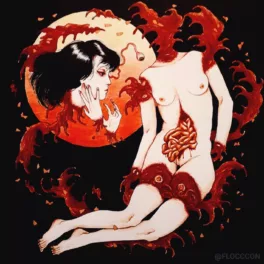Francois Vigneault has been active in the worlds of underground comics and small press publishing for the last two decades and change. A current resident of the outskirts of Montreal, he grew up in San Diego and spent many years in San Francisco where he operated the micro publishing house Family Style.
As a lover of genre fiction Francois organized two editions of the fantasy anthology ‘Elfworld’ and his more recent space opera ‘TITAN’ is available in both French and English.
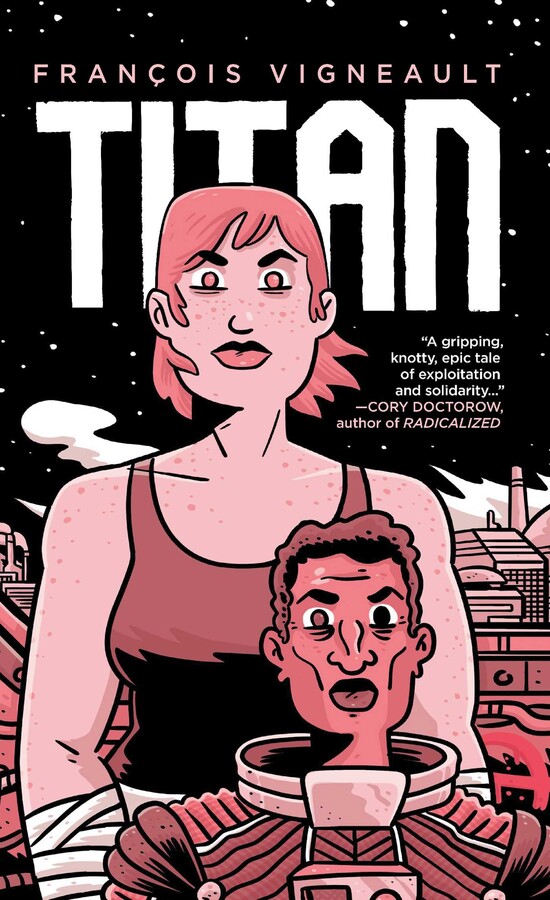
Our writer, and old friend of Francois’, Ossian Wynne Winningham chats with him here about his planned follow-up ‘Blue Moon’, other ongoing projects and their shared history as naive but enthusiastic teenage comic book fans.
Check it out below…
Your sci-fi comic TITAN is a little older but for readers who aren’t familiar I thought it would be interesting to talk about it based on the title’s different meanings….
First we have Titan as location – Saturn’s largest and best known moon. How does that shape the story?
Yeah, I find it interesting to think about the power of titles, I always want a title to have multiple resonances. Which is a little funny with ‘TITAN’, it’s such a simple, one-word thing, you might think it is just the default title in a way, but I do think there are some interesting things under the surface there.
You’re absolutely right to start with the location, having the book set on the moon of Titan gave me a “semi-realistic” reason to have my initial core idea (the giant humans and their relation to “normal” people) make some kind of sense (the low gravity on Titan) as well as the sort of social structure (the Titans are workers, extracting energy from Titan, and they are controlled and exploited by Terrans, humans from Earth).
It started with the setting and then that spun off into some other resonances or ideas, as I am sure you can imagine.
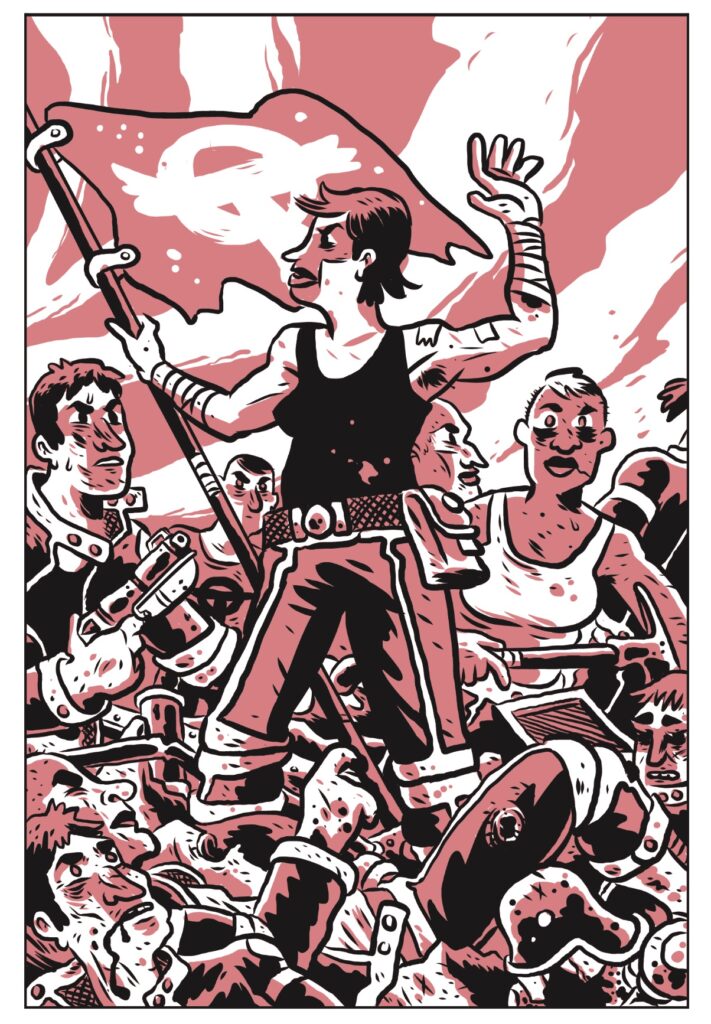
You just mentioned the Titans as a race in the book and that was where I was going to go next….
Science Fiction has a history of using allegory to address real world social issues regarding race – like how Rod Serling created The Twilight Zone because network censors wouldn’t let him directly comment on Emmett Till.
The Titans as giant humanoids are obviously “other” but your main character as a mixed race Brazilian man would have traditionally been “other” in older media and is now the stand-in for humanity at large.
How do you think Science Fiction has evolved in both representation of and discussion regarding race?
Amazing, I hadn’t heard about that connection with Emmett Till and Rod Serling before…
Incredible how everything is interwoven.
You’re absolutely right that I wanted to look at that classic and I think unfortunately eternal idea of the “other” and the kinds of disregard we humans can treat other with when we’ve assigned them to the “out group”:
“Oh, it’s okay to do something awful to THEM, they aren’t the same as US.”
As soon as I started playing with my initial, somewhat dumb idea (“What if there were giant humans? What would happen?”) I ended up in a pretty dark place: The Titans would be othered, exploited, hurt, and killed… And they would have the same feelings towards the Terrans in turn, naturally.
Then I tried to temper that with the potential of a more positive connection between those groups, as seen with João and Phoebe, the main characters. I wanted there to be some hope of connection.
In the broader world of sci-fi, I’m not sure where we are at with representation of race… I do know that there is a much more inclusive bent to “casting” characters now, which I’m all for… I’ve always thought that with sci-fi, you know it’s really easy to justify having a tremendous amount of diversity as the baseline. Like with João being Black, and Brazilian, I don’t think anyone’s gonna be like “Whoa! What’s going on here?!” They just accept it, as they should.
(I know that there’s a whole weird white nationalist side of the world who might be up in arms about it, but I happily don’t have to deal with them).
As far as discussion of the deeper levels of the idea of race and how it affects us, I’m not sure I have a good answer as to where science fiction (or even culture broadly) is at with it.
I do think people are taking it more seriously and thinking about it in different ways than even 10 years ago.
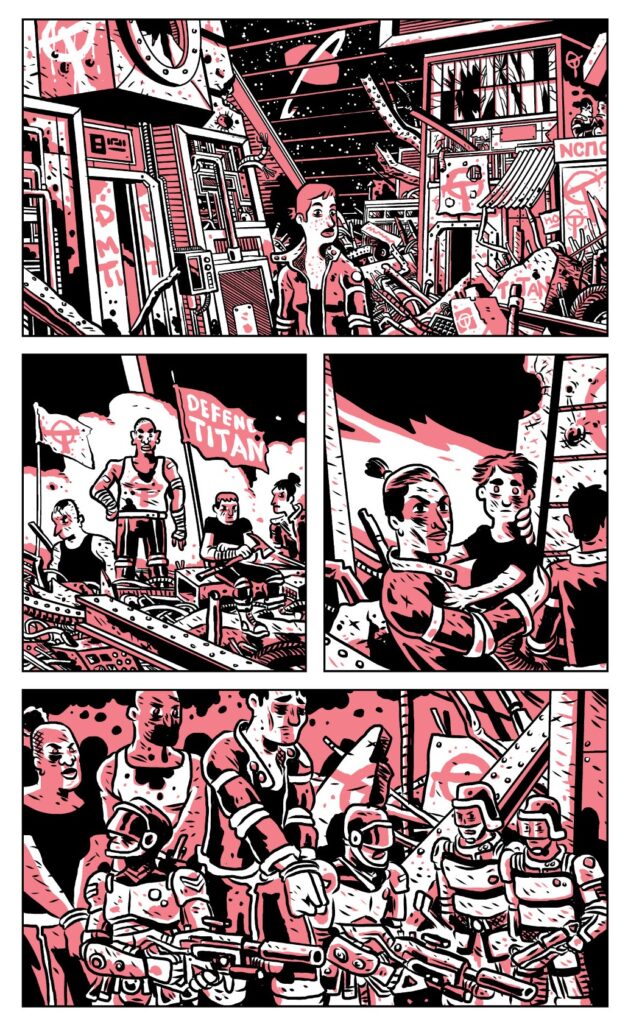
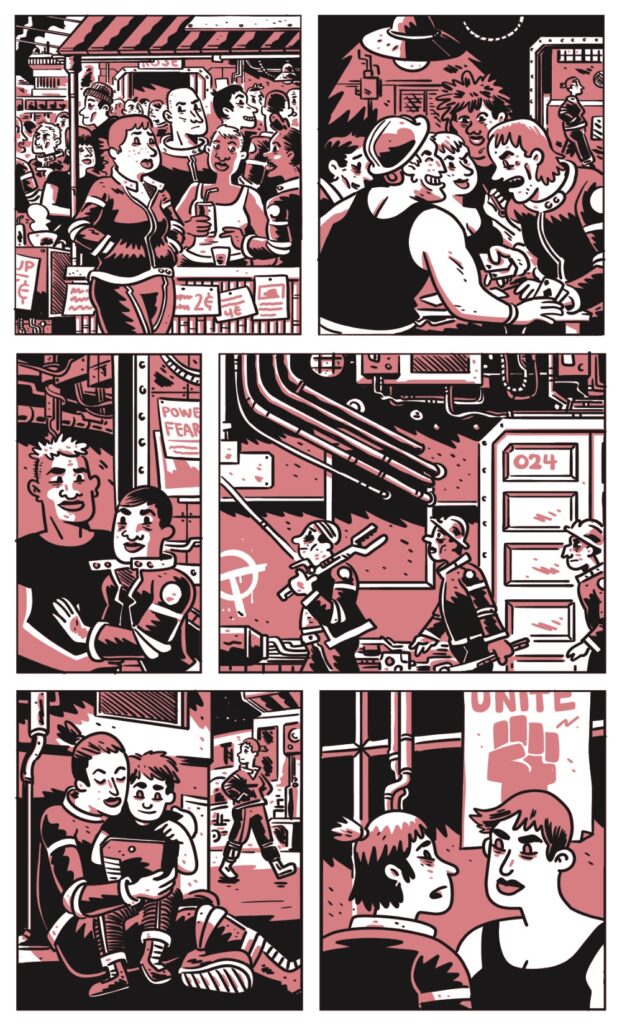
This is a great place to go into the third meaning of Titan – simply “big”.
There are many threads in ‘Titan’s story: romance, politics, technology, intrigue – To you, which one is the biggest?
Great question.
During the creation of ‘TITAN’ I thought a lot about the… What do you call it? The motto? No, it’s the epigraph, that’s it. The epigraph of ‘Howards End‘ by E.M. Forster is “Only connect.”
So that in some ways is the biggest thing in TITAN, it’s a book about connecting, in spite of all the things that drive us apart. It’s a cheesy romance novel. It all comes down to the relationship at the center of the book for me… Phoebe and João are caught up in events bigger than they are, but they have this moment of connection in the middle of it all.
I’m a romantic.
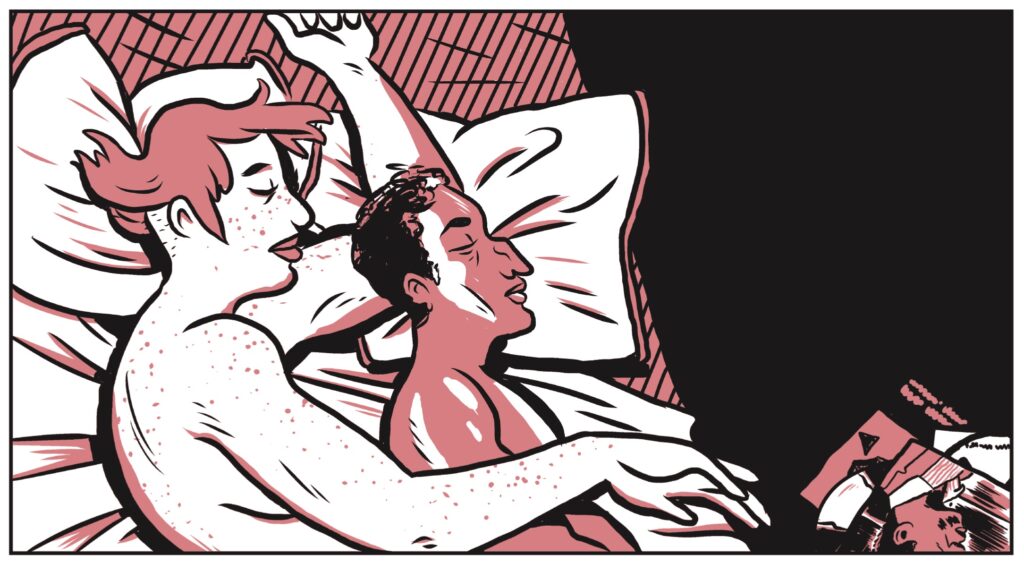
I know you are very conscious of making a strong follow up with what will be your next sci-fi comic – ‘Blue Moon.’ We’ve talked about it being a retelling of a certain famous fairytale, which I assume is the inspiration for the “Blue” component of the title, but we haven’t talked about “Moon” – Is it also set on a moon?
Haha don’t spoil too much!
The “Blue Fairytale” element is a bit of a secret. But yes the book takes place partly on the Moon, Earth’s moon, Luna, as it were. The narrative starts in a near-future version of Montréal (where I lived for 8 years), a hot, gritty, cyberpunk-inflected version of the city, and then moves to a palatial estate on the moon.
I’d say 3/4s of the action is on the moon. I don’t know why I have this fascination for satellites!
And yes, when I was searching for a title, I was again trying to come up with something that would have multiple resonances, but would seem really straightforward and simple on the face of it. “Blue Moon,” obviously it is a famous song title, so there are some interesting echoes there in the plot. And that title also suggested to me some interesting visual tricks in the books itself….
Suffice it to say I’m playing with color and blue will be important.
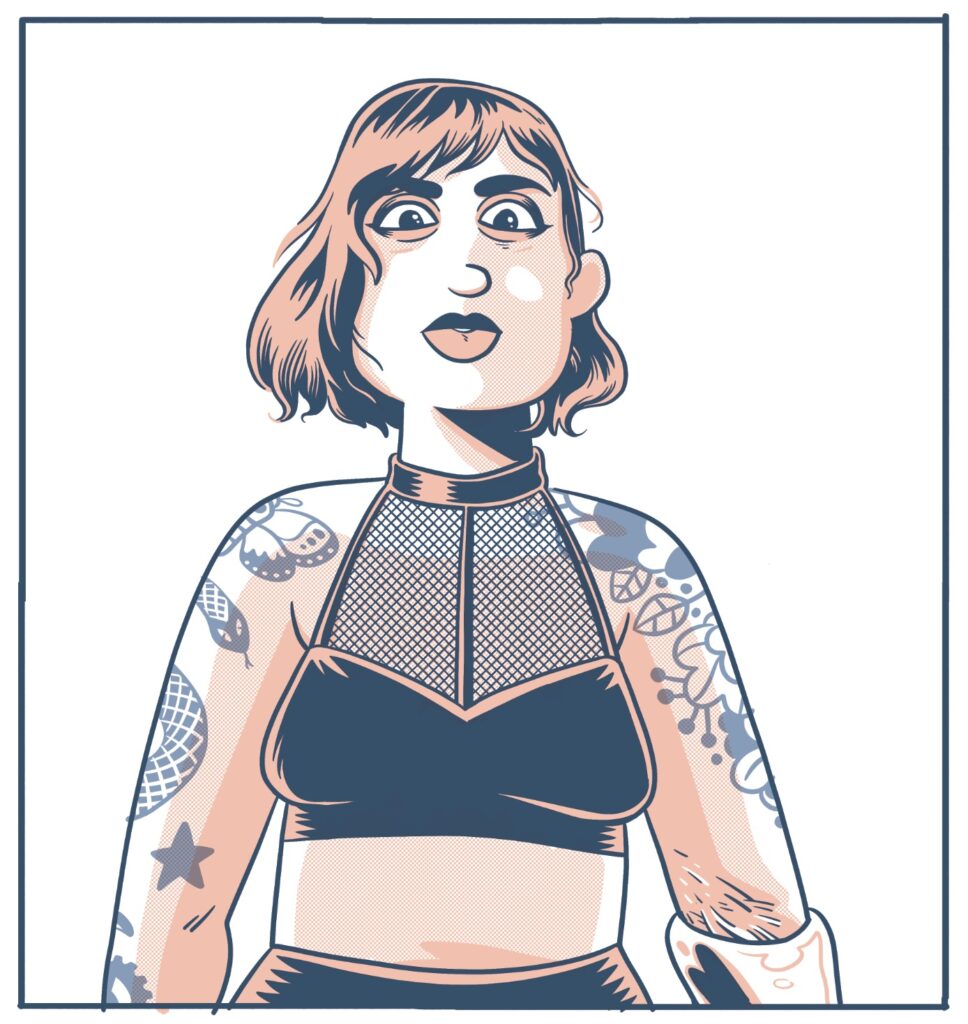
I didn’t know! And next I’m going to ask you about another thing I know you can’t say too much about…
You’re doing the art for a French language children’s comic that isn’t announced by the publisher yet.
What can you tell us about it?
Oh no worries! We’re friends so I tell you some “inside scoop” stuff sometimes.
It’s actually an interesting challenge to figure out ways to talk about ‘Blue Moon’ without mentioning that it is a version of a classic tale… One thing I say sometimes is that it’s, “‘Blade Runner‘ meets Angela Carter’s ‘The Bloody Chamber‘.”
That says a lot while being a bit coy.
Yes, the kids graphic novel! That’s what I am working on right now, it’s a sort of hybrid comic/picture book that I am drawing, working from the story of another author.
An interesting element of that book is that it is a sequel, part of a series of books, each time with the same author but a different artist. So I am trying to do my version of characters who have already been established. It’s an unusual challenge.
It hasn’t been officially announced yet so again I’ll be coy about details, but it will be coming out (in French only for now) in Fall of 2025.
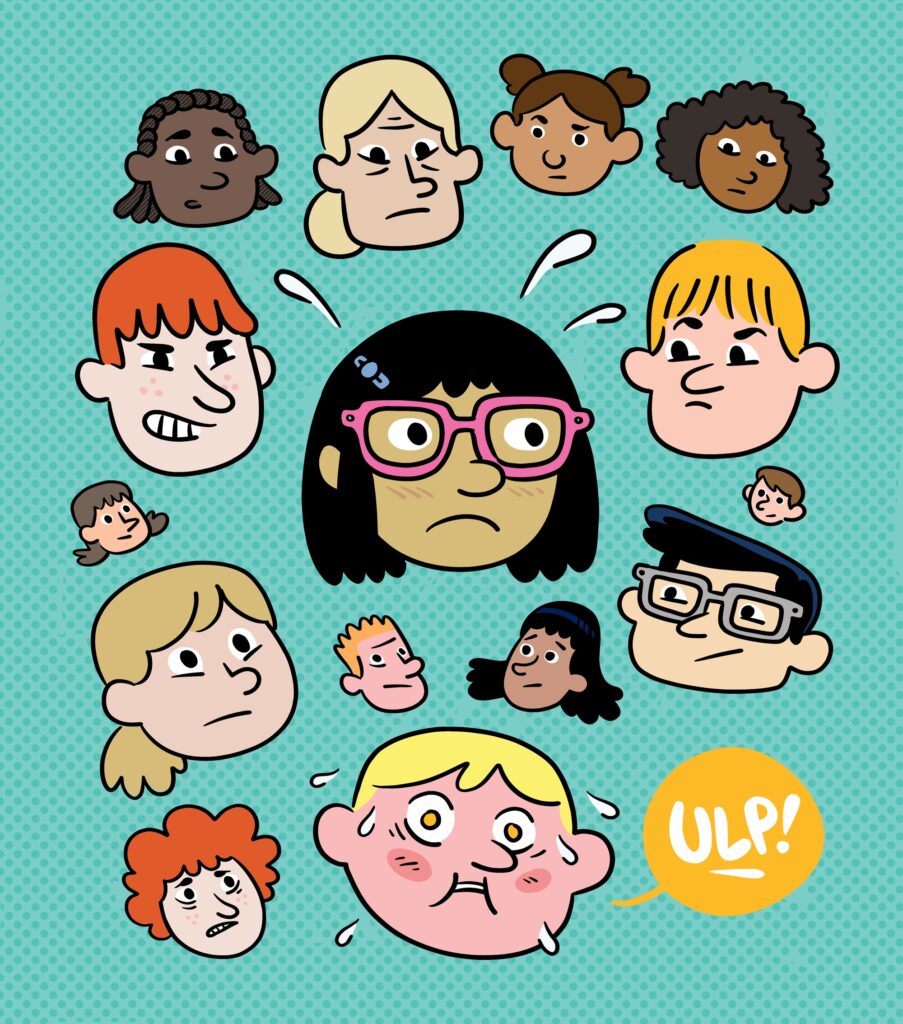
I know moving to Canada was important for you because you wanted to reacquaint yourself with the French language.
I’m not sure if I’ve seen much original comics from you in French but you’ve been working on French comics as an artist and translator.
In ‘Understanding Comics‘ Scott McCloud talks about different paces and rhythms in American Comics and Japanese Manga that relate to language and culture – Do you see differences between English language and French comics styles?
For sure I do. There’s French comics in general, which I think you could call the Franco-Belgian bande dessinées, and that is like one of the three main streams of the comics arts, along with American comics and Japanese manga. And it definitely has a different vibe, it encompasses everything from really super detailed art (think Moebius) to raw cartooning that came out of the 1990s “Nouvelle BD” with Lewis Trondheim and all the folks at L’Association, but you’re never gonna look at an album from France and think it’s an issue of Fantastic Four or a volume of Dragonball.
Then beyond that there is definitely a homegrown BD culture in Québec that stands a bit apart from the Franco-Belgian school. I think that the Québec authors have, due to their unique position at a sort of international crossroads, absorbed a lot of different influences…
You see elements of the French BD album mixed in with American comics, both mainstream and independent. And now you are getting an influence of manga, which is just so huge, bigger than both French and American comics I would say. Anyways, it’s definitely a mix of all sorts of stuff.
One element I noticed here in Québec is that the creators are ready to crank out work faster, they aren’t as precious about their work. Most of the creators I know here, they’ve got multiple books completed, they’re always working on something new, ideating new concepts, taking chances. There isn’t the same disease of perfectionism I see amongst my American peers.
I know a ton of creators in the USA who have been working on the same graphic novel for five, ten, fifteen years! They draw and redraw the same pages. It’s a bit crazy.
I’ve tried to really absorb an ethos of not worrying so much about perfecting what I am working on, but just getting it out there, and moving on to the next thing. That said, I’m quite late on Blue Moon so I guess I haven’t fully exorcised my American psychoses.
One funny thing regarding comics from France, and specifically French Science fiction comics, is that there is a sort of expectation there that sci-fi comics will look sort of like Moebius or what have you, that the art will be at a very high level of finish and quality. I’ve been to the Angoulême Festival a couple of times, and plenty of folks vibe on my stuff, but some old-school sci-fi fans take one look at ‘TITAN’ and put it down, it’s too raw and loose for them!
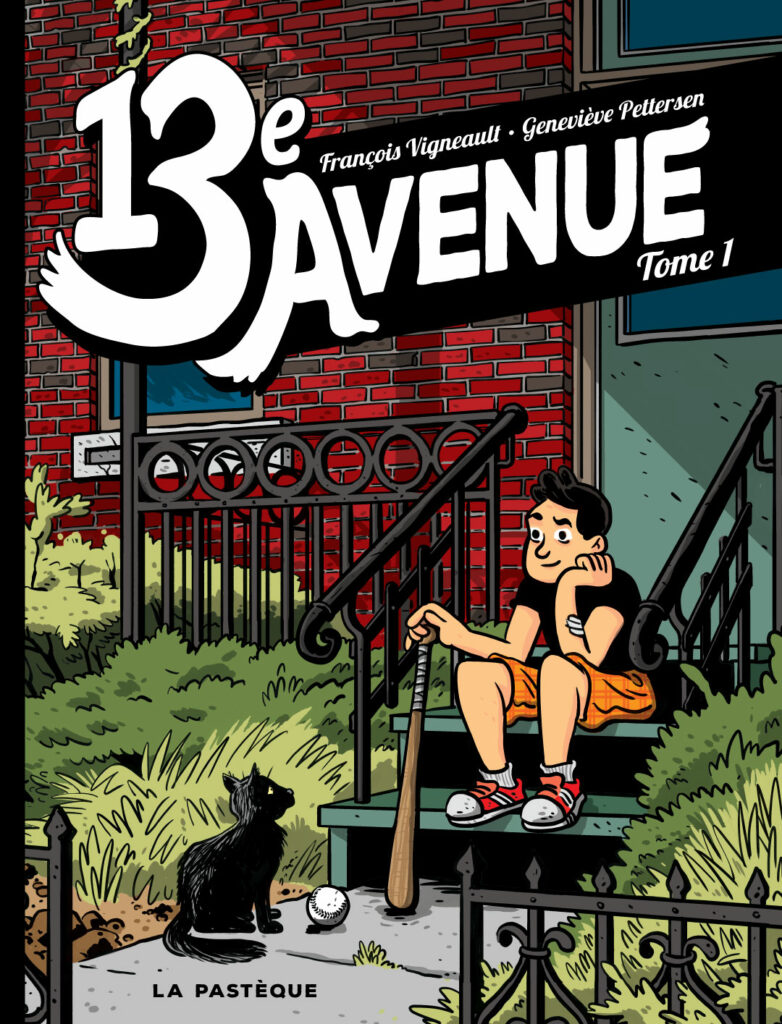
Published in 2018 by Pasteque.
Ha! Reminds me of the Daniel Clowes‘ comic about loving sloppy music but being super critical with comics!
…. back when you ran your own small press, Family Style, most comics I saw from you were traditional, single creator underground comics. You were also living in a punk house in San Francisco and very social.
Now you’re living the rural married life, just like me, and I see you working on a lot more “team” comics where you are just the artist, translator or even letterer and many other people are involved – Is it a new way of being social?
That’s a great observation, and I think it might be in some ways, it is a way to connect with people, since I am a bit more off the grid now. I also try to balance working on solo, “all me” projects like ‘TITAN’ and ‘Blue Moon’ with things I collab with others on…
Most recently I’ve been writing something that another artist, Artyom Trakhanov, is drawing, which is a real trip for me, just totally backwards.
But on the other hand I’ve always been a bit attracted to collaboration… Even back in the day, I would have a comic I was doing by myself, like Friends or whatever, but I would also have things going with other creators, like the collective zine project Family Style Jamboree, the Elfworld anthology, or even the fact that I ran zine and comics festivals for so long.
I gotta say I love to do community work. It could be a bit of a crutch, too… Like I’m not sure if I see my own work as being 100% worthy, haha. And of course I do some of the collaborations just to pay the bills, doing comics is a passion for me but it’s also my job (along with design, illustration, translation, marketing, etc).
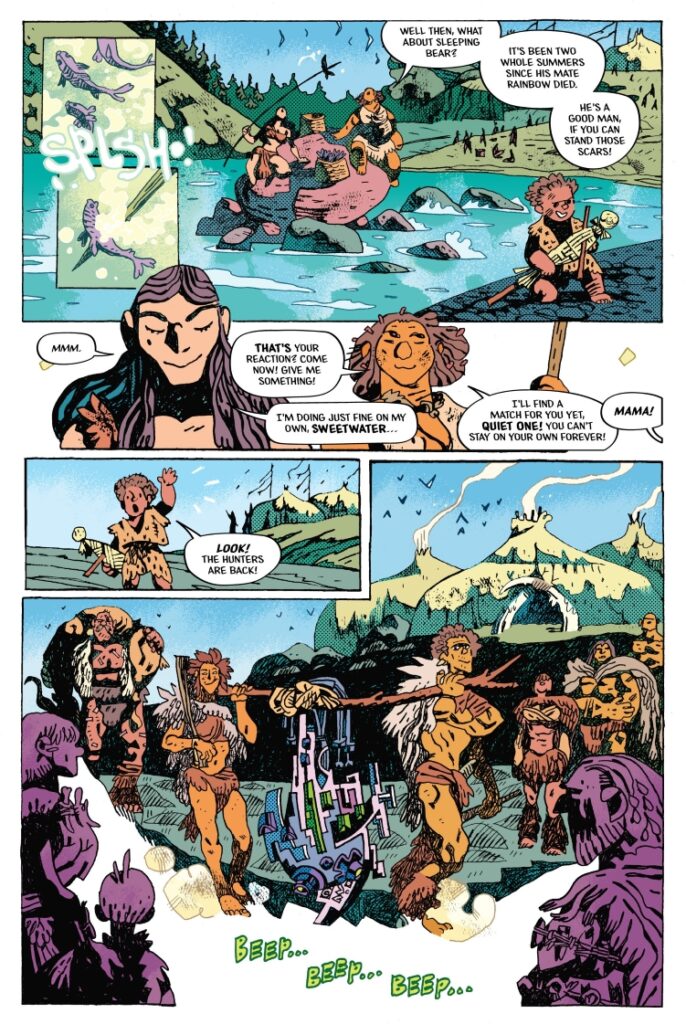
From anthology comic ‘XINO‘, published in 2024 by Oni Press.
If it isn’t totally obvious to any readers yet we’ve known each other a long time. I remember buying a T-shirt from Paul Pope, when he was doing THB, and he told me to get it as tight as possible but I got a 4XL trying to fit in with “normal” kids at the time.
Listening to him would have given me a head start on being “grownup” hip and fashionable!
For a final question what are some things you learned from either Paul Pope or Stan Sakai doing that first zine?
Or even like me; things you wish you’d listened to earlier?
Hahaha! Yeah we really have known each other a long, long time…
We grew up in San Diego and were hanging out at the San Diego Comic Con every year, for like four days straight, not even going home. “They were the best of times, they were the worst of times…”
Yeah the thing you are talking about is the very first zine I ever did, way back in my high school years I put out a zine with the oh-so-pretentious title of ‘The Comics Review’, It only had a single issue published but I had big plans for issues 2 and 3 and I managed to interview both Stan Sakai (Usagi Yojimbo) and Paul Pope (THB, Batman, Battling Boy) at Comic Con one year.
It’s insane to even think about the fact that I arranged those interviews in advance via snail mail, this was pre-email! I remember Paul Pope was like “Cool, let’s grab a coffee” and that coffee I had with him was literally the first cup of coffee I had in my life, I was like 16 years old! So Paul Pope jumped me into coffee culture, haha.
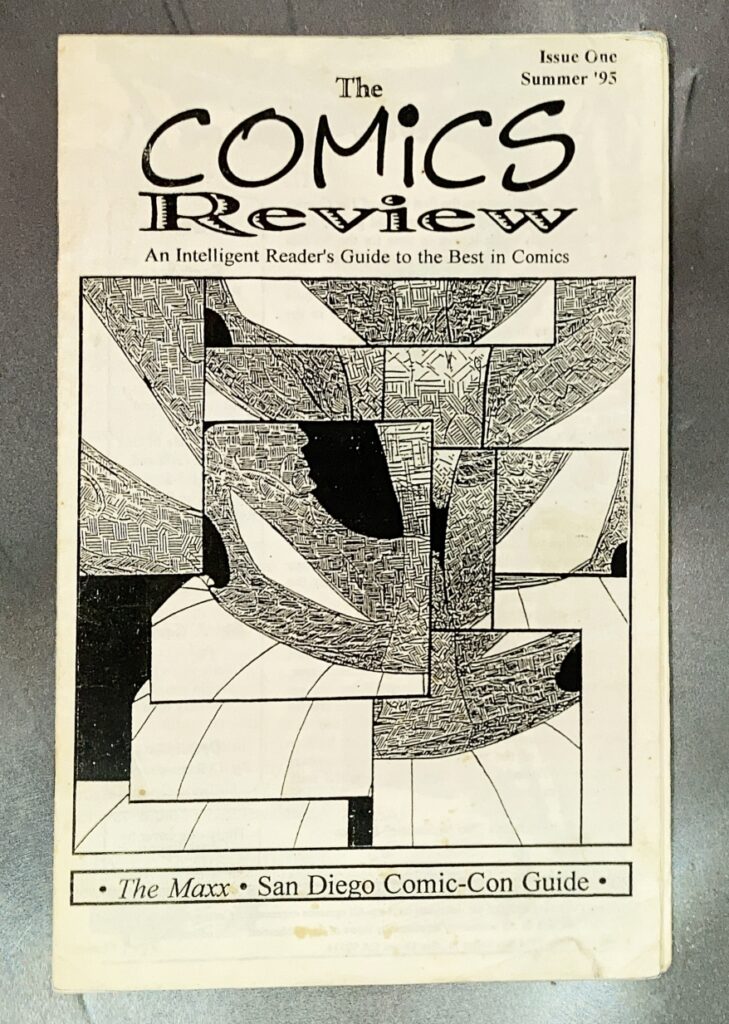
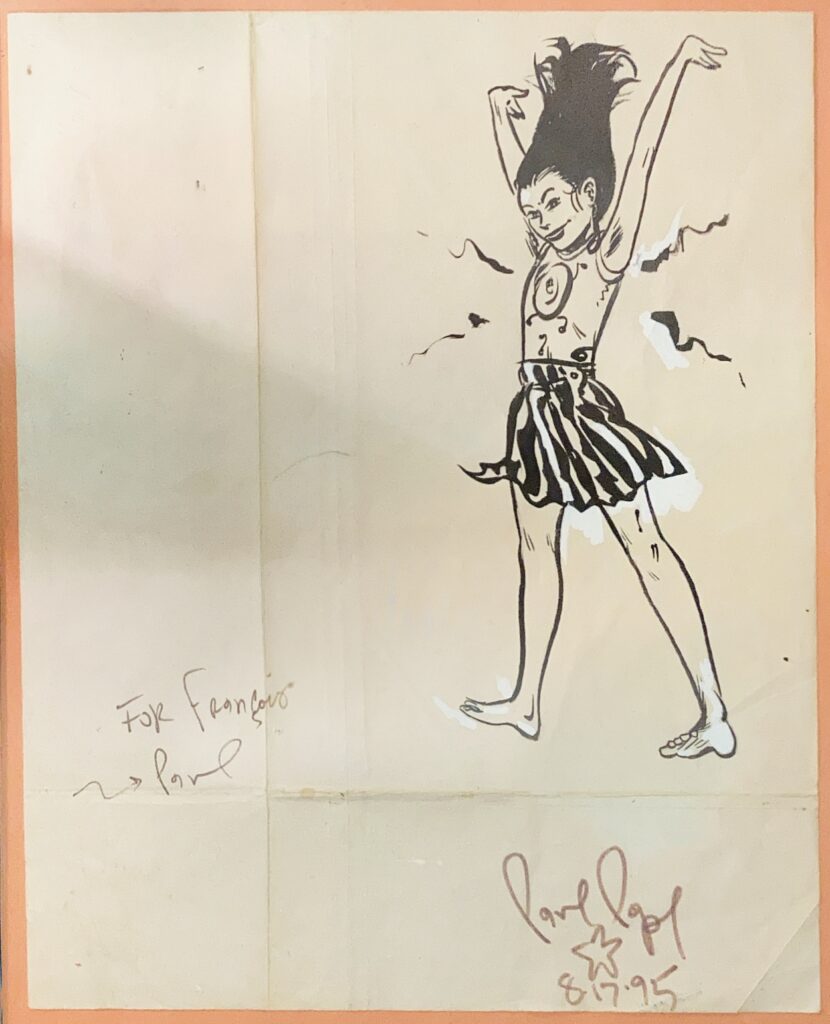
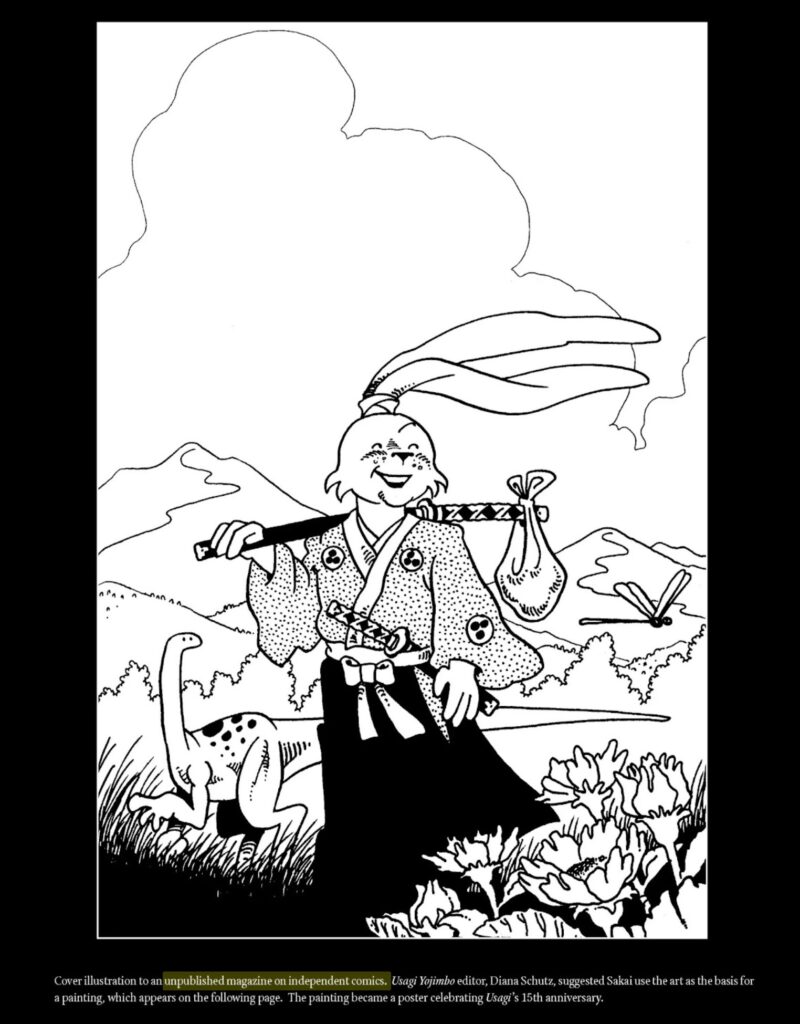
We really were too big of nerds for coffee!
I hated coffee houses because they were too “cool” for me!
Both Stan Sakai and Paul Pope were totally gracious and generous with me, they both even provided cover art, which was supposed to run in issues 2 and 3, but I never published those, I just totally failed.
I still have the Pope piece, he sent me an original drawing (!?!). Sakai’s piece, a few years later he put out an artbook and the drawing was in there. The caption read something like “A drawing I created for a never-published fanzine.” I was honoured, and then I was embarrassed.
So even though I can remember some interesting things both of them said to me at the time, I think the biggest lesson I learned was due to my failure: Despite all the odds, I managed to land these interviews with these really great creators, but I didn’t deliver the goods. I didn’t do the work to make those subsequent issues happen, and so my dumb little zine died an unmourned death.
So when I think back to that now I’m like, that’s the lesson: You gotta deliver the goods.
No one really cares about your great idea for some comic, or your never-published interview, or whatever. You have to finish what you start, otherwise it’s just like, a little embarrassing story you tell down the line.
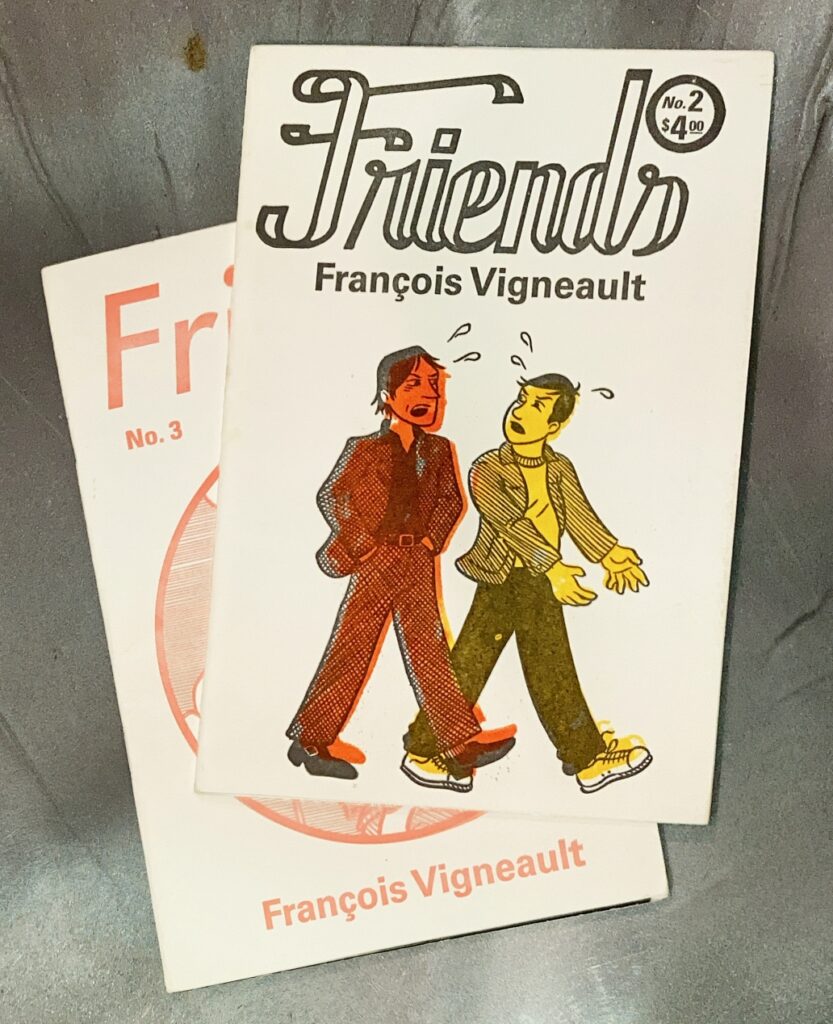
Links
- Francois Vigneault – Website
- Francois Vigneault – Instagram
- Francois Vigneault – Facebook
- Francois Vigneault – Patreon
- Francois Vigneault – Goodreads Entry
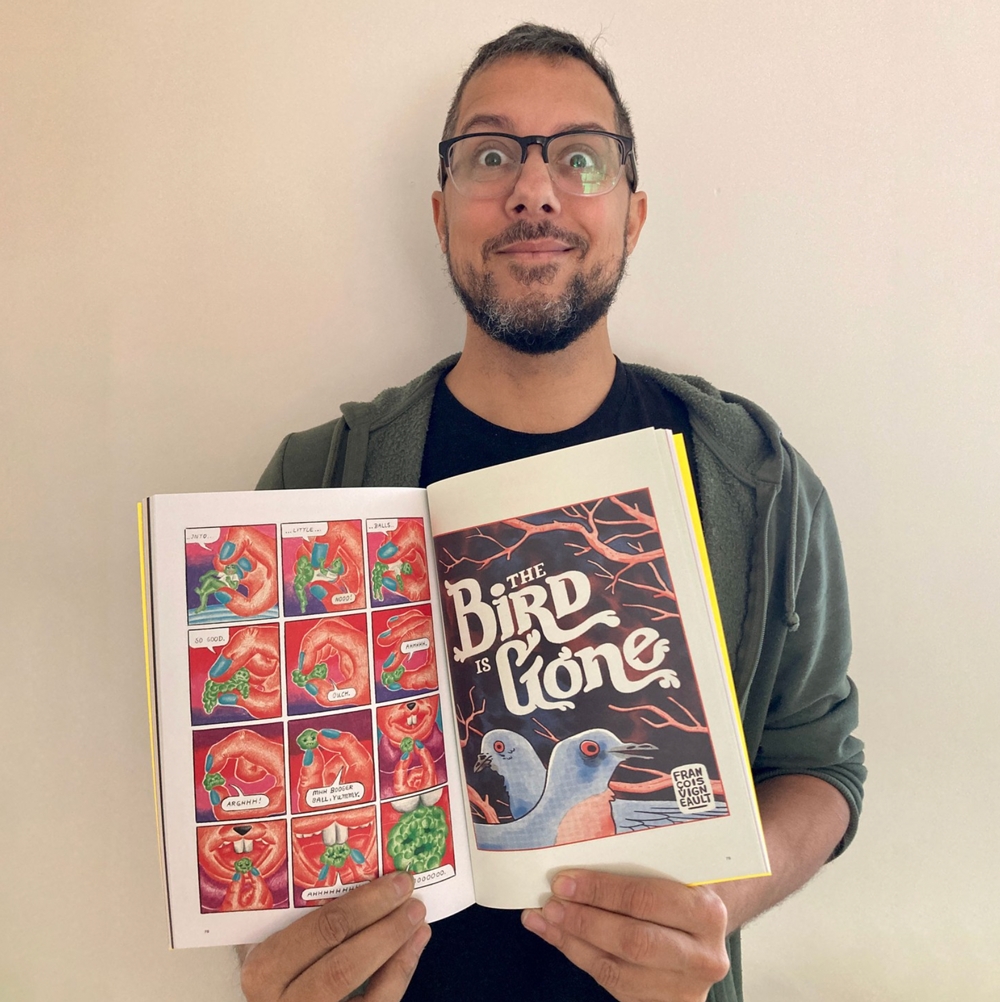
All images supplied by Ossian and Francois, or sourced online.
